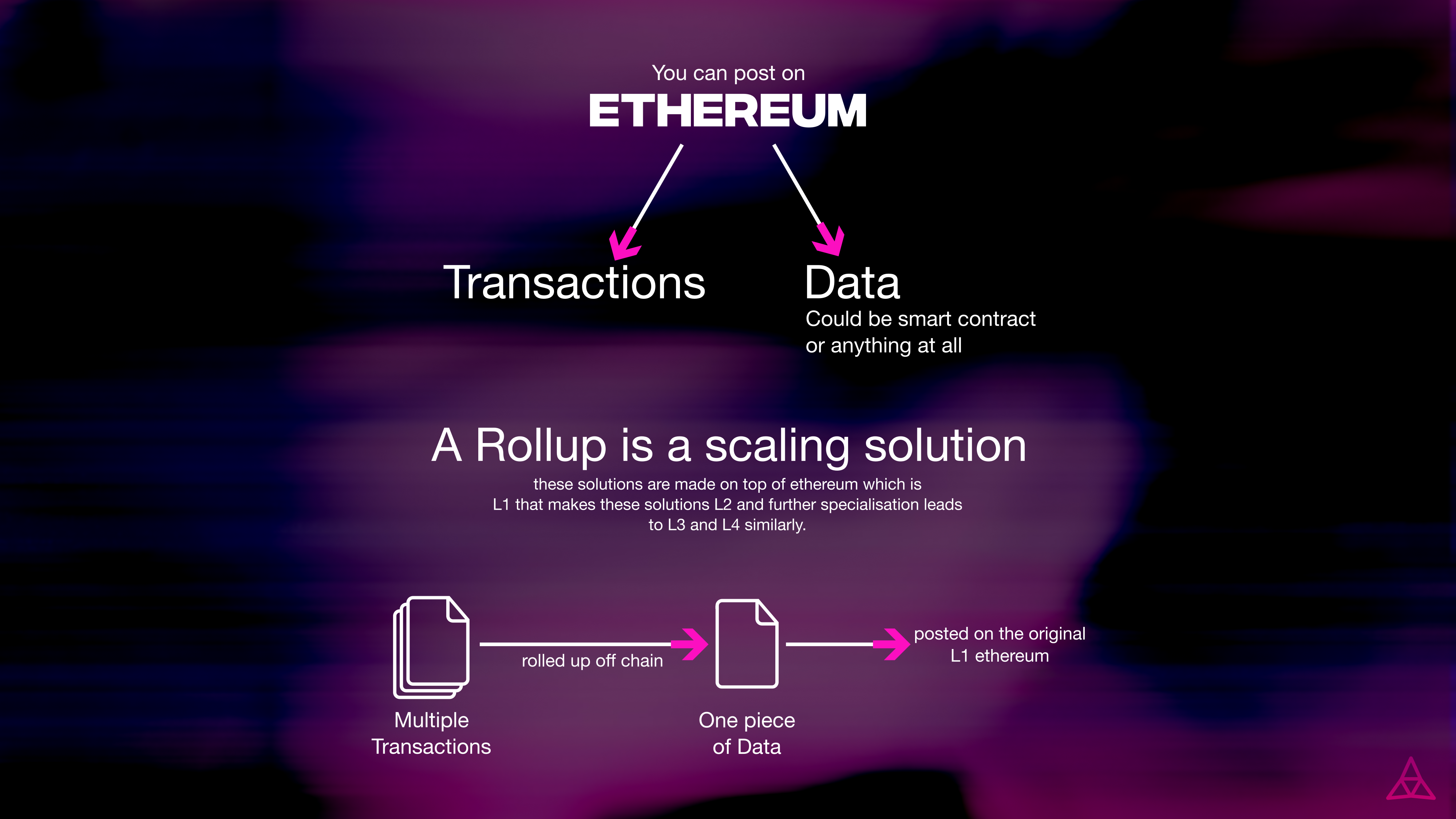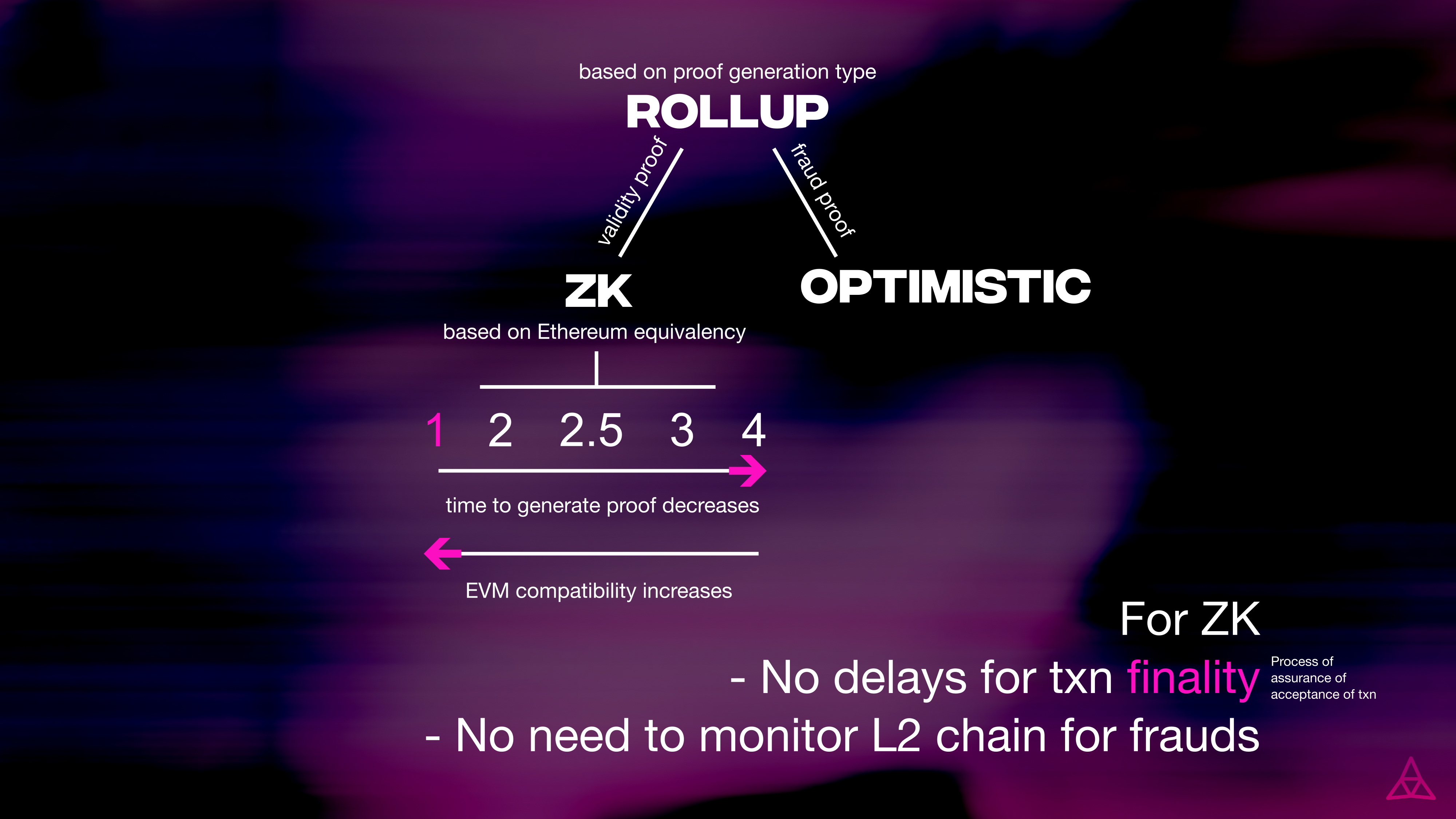Hi everyone, The following write-up is to give a brief overview of what Taiko is for beginners to understand.
Starting from the beginning, you would know that Ethereum is a Layer 1 Blockchain where you can post “Transactions” and “Data”(This can be any smart contract or other info and it is stored on the Ethereum Network).

Rollups, according to eth(dot)org, execute transactions outside of layer 1 and then the data is posted to layer 1, where consensus is reached.
Basically we are taking the transactions and then rolling them up into 1 piece of data and posting it back to the original blockchain.
Hence, we can say that Rollups are layer 2 scaling solutions that perform transaction operations off the main Ethereum blockchain but still post the transaction data onto layer 1.

For a basic example, let’s say an ethereum block was earlier capable of ‘x’ amount of transactions and now each rolled-up file has 10 transactions rolled up in them, then the scalability was effectively boosted by 10x.
Now, what exactly does all of this help with?
-
We get a much higher throughput (Transactions per second{TPS} not to be confused with the total time taken for one transaction). With layer 2 solutions this can go beyond 100k TPS from the current 15TPS for ethereum.
-
We keep the same level of security which ethereum is known for as the data and proof of transactions still reside on layer 1 ethereum.
-
We get gas fee reduced to a fraction of it as transactions are executed outside the layer 1 ethereum.
Along with the above mentioned benefits, we should not forget how this will boost the participation.

Now based on different types of proof generation(You may think of proofs as reports of verification that the amount of assets being sent is in balance of the sender and that the sender posesses the private key) at the time when the data is put back on the main blockchain and verified, there are two types of rollups:
-
Optimistic Rollups: generates a fraud proof that is, as the name says, ‘optimistic’ and approves all transactions as valid until called out by third parties.
Examples: Arbitrum, Boba Network, etc.
-
ZK or Zero Knowledge Rollups: generates a validity proof that uses a cryptography proof called zk-snark(Zero-Knowledge Succinct Non-Interactive Argument of Knowledge) in which one party can prove to the other party that they possess certain info without giving access to that information itself by making a secret key made before transaction.
Privacy oriented cryptocurrency ZK Cash uses this cryptography proof as well.
These types of rollups are further divided into 5 types based on ethereum equivalency or how equal they are to ethereum.
- Type 1
- Typer 2
- Typer 2.5
- Type 3
- Type 4

Taiko is a Type 1 layer 2 ZK rollup which is fully Ethereum equivalent which means:
- Whatever runs on ethereum layer 1 can be dropped directly on Taiko and it will run just fine with no need to recompile, no re-optimisation of gas fee required, etc. modifications which may involve its own dapp modification costs.
The above can be termed as “Zero Line Code Of Change”.
- It would be always compatible even when ethereum goes through various upgrades provided on its roadmap as Taiko does not change block structure, code language, signature algorithm, etc. unlike other types of ZK rollups.
One can migrate from Ethereum to Taiko or from Taiko to any other EVM-equivalent chain at any given time.
I hope this write-up helped you to understand broadly what Taiko is.
Here is the link to the above images as a single PDF file.
Thank You